Scotland is home to many a gothic, enchanting castle – all of which hold their own sordid stories of royal endeavours, military plots, and murder most foul!
One of our favourites – a true sight to behold – is Keiss Castle in Caithness, nestled just about as far as you can go in Scotland before hitting John o’ Groats. Like many Scottish castles, Keiss is perched upon a puffin-dappled clifftop and overlooks the Atlantic Ocean.
A day spent exploring a mysterious old Scottish castle is never a day wasted, so let’s find out more….
Exploring Keiss Castle in Scotland
Okay, first things first: Keiss Castle – or at least, Old Keiss Castle (more on this later) – is no longer a functioning castle; it is sadly in ruins, but it is still well worth a visit.
The History of Keiss Castle
This 16th-century tower house can be found dramatically overlooking Sinclair Bay on the northern tip of the Scottish peninsula and is settled (somewhat precariously) on the very lip of a cliff.
Located near John O’Groats, and about a mile from the village of Keiss in Caithness County, the castle dates back to the late 16th/early 17th century and was built by Sir George Sinclair, the 5th Earl of Caithness (and of the Sinclair Clan). It’s said that the castle was built atop an earlier fort, however, no records survive to verify this.
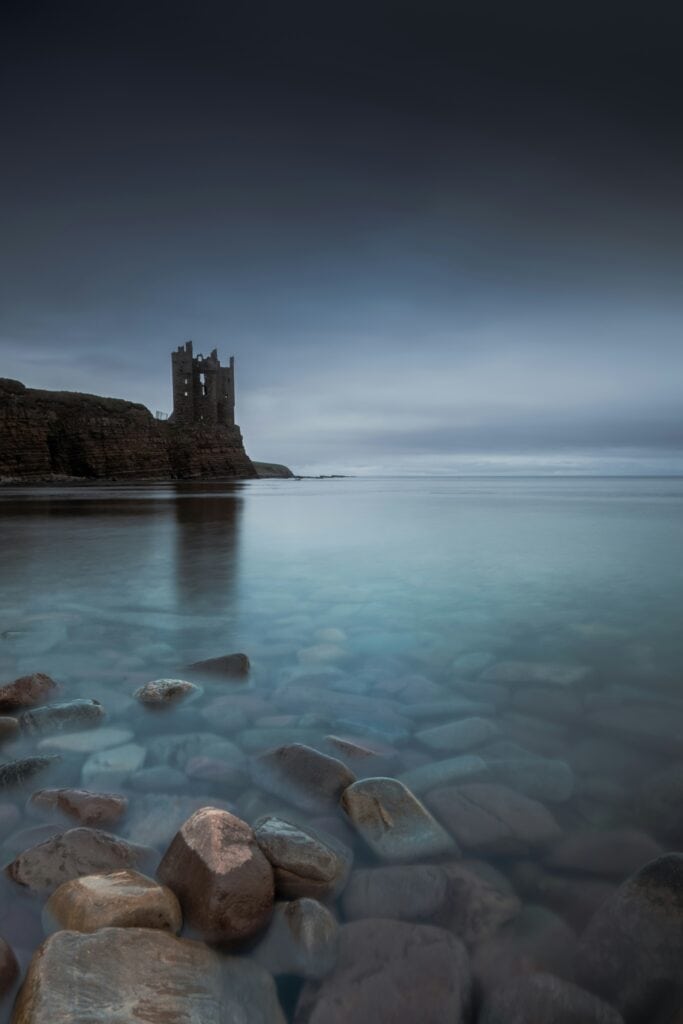
Old Keiss Castle
Although the building was an elegant baronial house, it was considered ‘ruinous’ by 1700 and was evidently not well-looked-after by the owners.
Here’s where things get a tad confusing. The Sinclairs, well aware that the castle wasn’t in a particularly habitable state, decided not to renovate the property – but wanted Keiss Castle’s name to live on.
So, what they did was build a new castle in the early 18th century – which is more of a manor house than anything (although it does have a small turret on the north-facing side of the building!) – on the Keiss Castle grounds, which is now known as New Keiss Castle.
The original structure, which is now more of a novelty than anything else, is considered as Old Keiss Castle.
New Keiss Castle
So, now that we’ve established there are two castles on the Keiss grounds (kind of), let’s take a peek at the history of the newer one.
Well, for starters, the new build (as well as the Sinclair beaches) played a prominent role in defending Caithness during World War II, largely because this area is in close proximity to the Orkney Isles, which are home to a base belonging to the Royal Navy’s home fleet.
The building of the New Keiss Castle was commissioned by the Sinclairs and was owned by them until 1755, when the family fell upon hard financial times and was forced to sell the property and its land. It was purchased some ten years later by a man named David Bryce.
In 1866, the property was then sold to the Duke of Portland. It’s not public knowledge who is the current owner of the castles.
Castle Sinclair Girnigoe
The Sinclair Clan, evidently not satisfied with two castles, also owned another – the Castle Sinclair Girnigoe – which can be found some three miles north of Wick in Caithness, and is even older than Keiss Castle (it is estimated to date back to between 1476 and 1496).
Much like Keiss Castle, Castle Sinclair Girnigoe overlooks Sinclair Bay, is also in a ruinous state, and is now considered a scheduled monument (an archaeological site of importance that is protected from ‘unauthorised change’).
Like many castles, Castle Sinclair Girnigoe was ruled by a formidable (if not, tyrannical) person of significance – George Sinclair, the 5th Earl of Caithness, who, upon learning that his son was defying his rule, had him locked up in the castle and deliberately withheld water from him so that the boy died ‘insane from thirst’. What a nice man….
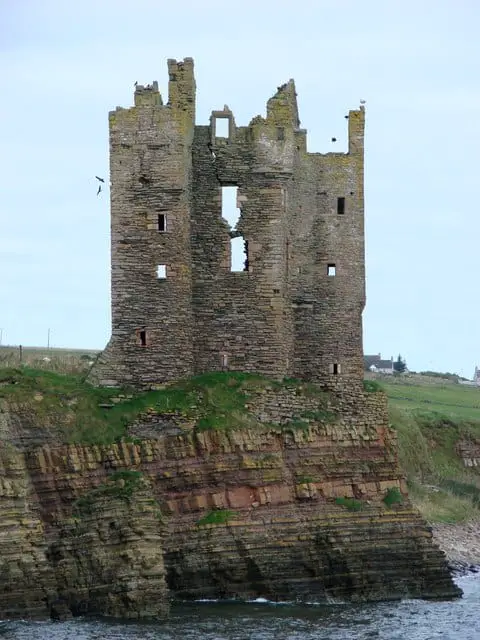
Keiss Village
Scotland is a haven of fabulous little fishing villages, which make for a great day out to enjoy some Scottish charm, hiking, wildlife, and hospitality.
As well as a traditional pub/inn, in which you can refuel with a bite to eat or a quick drink to warm those bones, the village of Keiss boasts beautiful sandy beaches and a tidal harbour.
It’s also peppered in brochs (Iron Age drystone hollow-walled structures) and other ancient artifacts, as well as the ruins of Keiss Castle.
Getting to Keiss Castle
Owing to safety reasons, as well as being privately owned, it’s not possible to visit the castle ruins (part of which collapsed and was lost to the unforgiving shores of the Atlantic Ocean), but that’s not to say its beauty cannot be marvelled at from the nearby beaches, perhaps while enjoying a picnic.
You can view the castle by visiting Keiss Beach, which is best done by car. Here’s how to get there.
- Head towards Keiss Village via the A9 or A99.
- Once you’ve found the village, find parking at the harbour or on the high street.
- Take the coastal path just off the harbour, which will take you to Keiss Beach. This footpath is uneven and can be subject to the elements, so appropriate footwear is advised.
Eating & Drinking in Keiss
Okay, so in case you haven’t gathered already, Keiss is pretty remote and somewhat off the beaten track, so you’re not in ample supply of eateries. In fact, there are a whopping two options:
That said, there are plenty of delicious options in the Caithness area:
- Stacks Deli, Bakery, & Coffee House in John O’Groats
- Wickers World in Wick
- Puldagon Farm Shop & Restaurant in Wick
- No. 1 Bistro in Wick
- Bord De L’eau in Wick
- Devitas Pizzeria & Café in Wick
- Northern Sands Hotel & Restaurant in Dunnet.
- Seaview in John O’Groats
- The Printers Rest in Wick
Staying in Keiss
Just because Keiss is a tiddler of a town, that doesn’t mean there’s not a good selection of places to stay (either in the village or nearby). Here are some of the accommodation options that we love.
Plowman’s Cottage, Keiss
Boasting a castle view, Plowman’s Cottage in Keiss offers comfortable beds and a warm welcome from the owners.
Also included:
- Free WiFi
- Free parking
- Beachfront/castle views
- Family rooms
- Superb breakfast
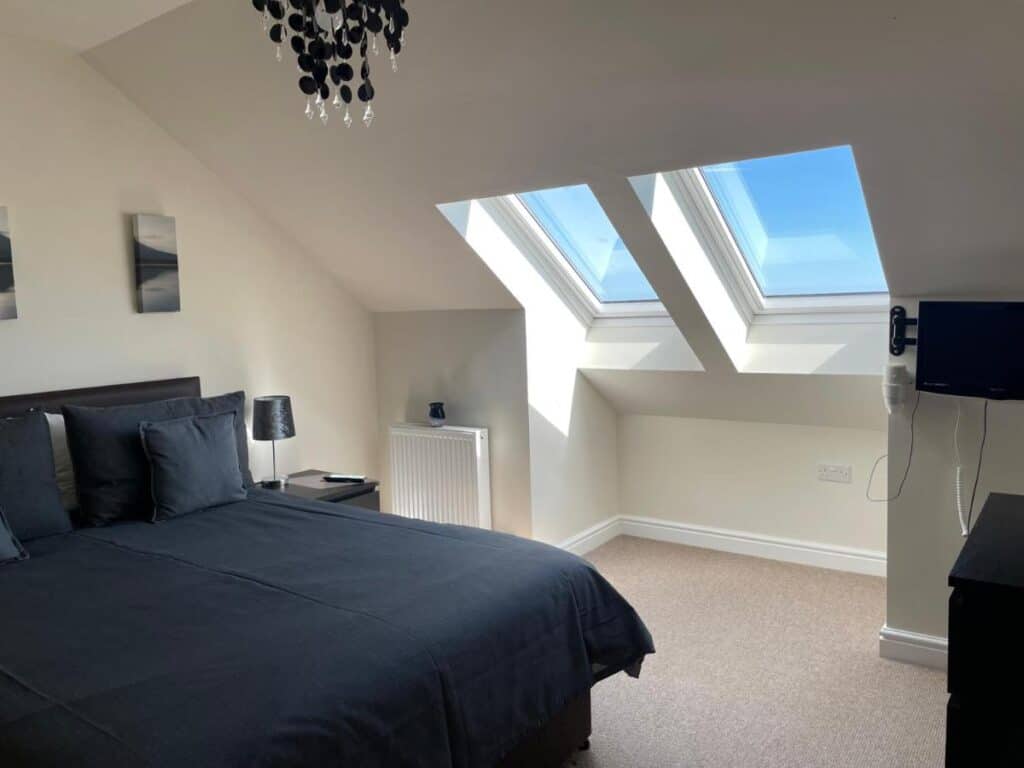
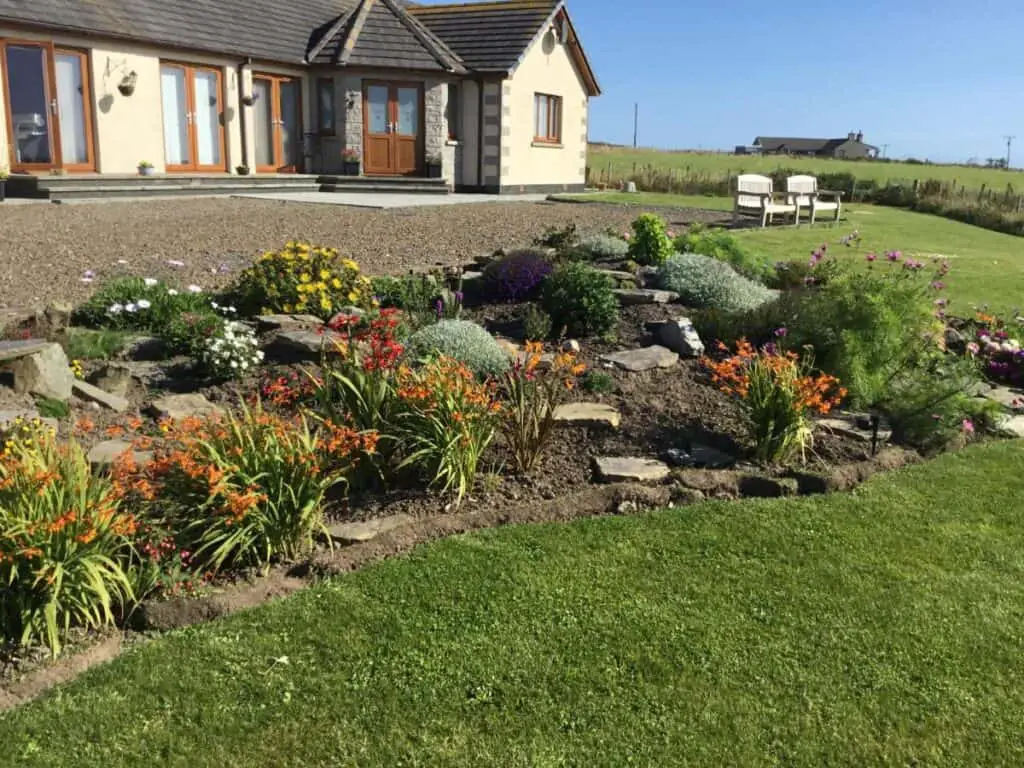
Luxury Self-Catering Traditional Family Farmhouse, John O’Groats
Cosy farmhouses are a great way to enjoy a British holiday with a bit of space and peace and quiet, and this pet-friendly 4-bed accommodation is no exception!
Also included:
- Kitchen
- Deck/patio
- Garden
- Games room
- Towels & linen
- Free WiFi
- Laundry facilities
The Norseman Hotel, Wick
The eco-certified (and pet-friendly) Norseman Hotel, which can be found in rural Wick, is conveniently located near the John O’Groats Ferry Terminal and Gills Bay Ferry Port.
Also included:
- Free parking
- Bar
- Free WiFi
- Restaurant
- Room service
- Laundry service
- Housekeeping
Bank Guest House, Wick
Did somebody order a guesthouse with a side of swanky?! This fabulous accommodation is located in the heart of Wick and is within walking distance of some of the area’s best-loved hotspots, such as Old Wick Castle, Pulteney Distillery, and the Wick Heritage Centre.
Also included:
- Free WiFi
- Free parking
Sinclair Bay Apartments, Keiss
If you’re adamant about staying in Keiss for some true rural solitude, the Sinclair Bay Apartments provide everything needed for a comfortable retreat.
Also included:
- Restaurant
- Free WiFi
- Free parking
- Bar
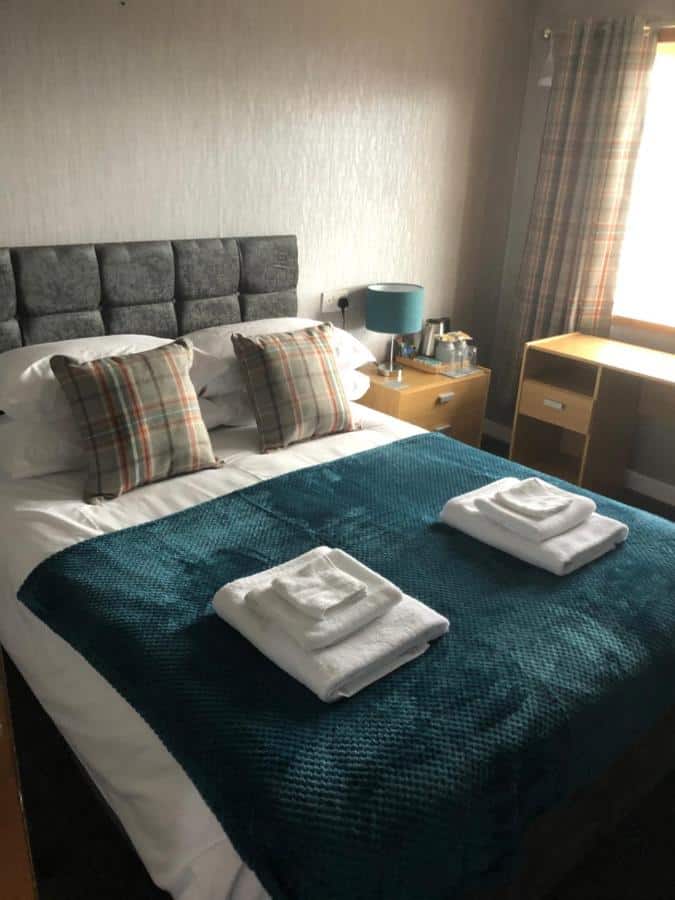
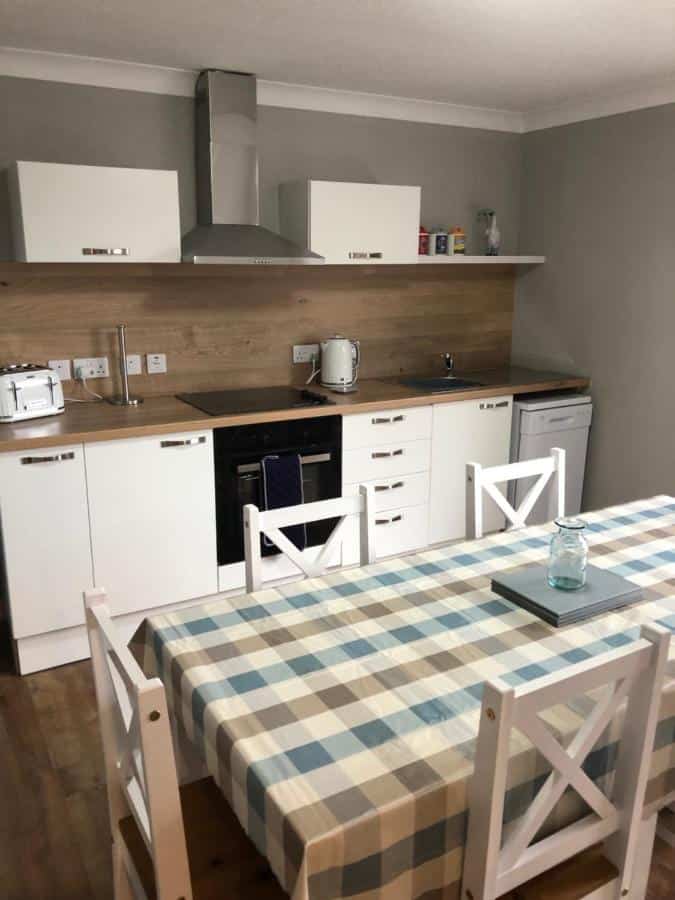
Mackays Hotel, Wick
This central townhouse/hotel is brimming with British charm and features a delightful bar/lounge. Pets are welcome, too!
Also included:
- Free parking
- Free WiFi
- Restaurant
- Laundry facilities
- Room service
The Clachan Bed and Breakfast, Wick
Scottish hospitality with countryside grandeur thrown in? Where do we sign up?!
Also included:
- Free breakfast
- Free WiFi
- Free parking
- Housekeeping
Sinclair Bay Lodges, Keiss
If you plan on indulging in some glamping (Scotland is the go-to glamping hotspot of the UK, after all), these incredible lodges are the way to go!
Also included:
- Hot tub
- Balcony
- Sea view
- Free WiFi
- BBQ facilities
- Free parking

FAQs
The estate was owned by the Sinclair Clan – the initial purchase of which was made by Sir William Sinclair, the 2nd Baronet of Dunbeath, at the beginning of the 18th century.
Old Keiss Castle can be found on the grounds of New Keiss Castle, on the A99, north of the village of Keiss. The main entrance/drive is marked as ‘private’, so it is recommended you follow the signage to the harbour, where you can view the castle’s ruins.
Scotland’s oldest castle is (the ruins of) Castle Sween in Argyll. It is estimated that the castle, which overlooks Loch Sween, was built in the 1100s.
The castle is privately owned by the current hands of New Keiss Castle.
The castle can be found in a little Scottish village called Keiss in Caithness County, The Highlands, which is a coastal fishing community on the northern peninsula of Scotland.
More Scotland Posts
- The Three Sisters Glencoe: A Guide
- 10 Best Waterfalls in Scotland for 2024 Adventures
- Hopetoun House: Outlander, History, & More
- Things to Do at Loch Lubnaig: Your 2024 Guide
- Best Places to Stay on the Isle of Skye: Our Top Picks
- Exploring Keiss Castle in Scotland: A Guide
Free Resources





And as always, you can find more sustainable travel content on Instagram @VoyagingHerbivore, Youtube, and TikTok and to get updates straight to your inbox, enter your email below.
If you found this guide helpful and want to help us keep these resources free,
please consider making your next Amazon, Expedia, Hostel World, Etsy, Trivago, and Booking.com purchase through our links (just click right on those words – you can do it right now and unless you clear your cookies before your next purchase, it will remember). It costs you no extra and gives us a small commission. Thank you!
Pin Keiss Castle in Scotland
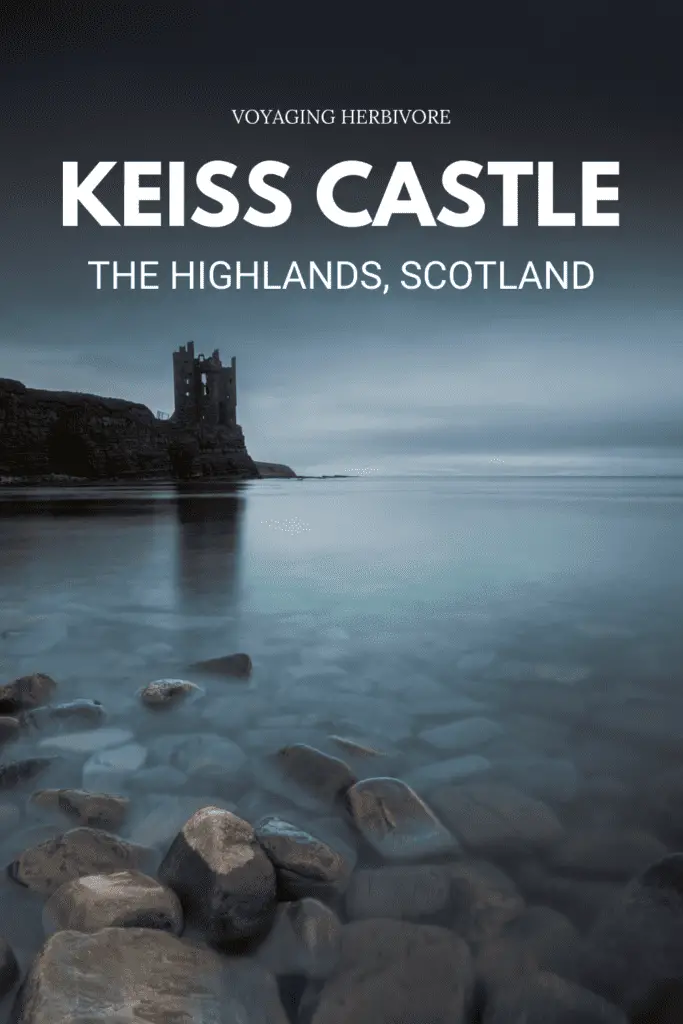






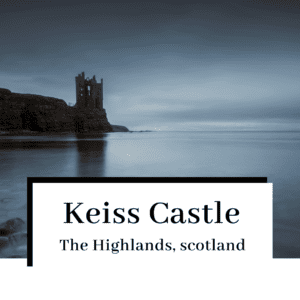



Leave a Reply